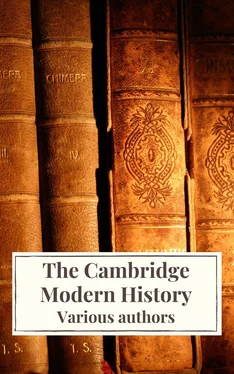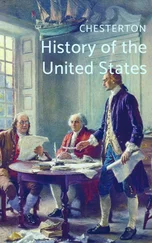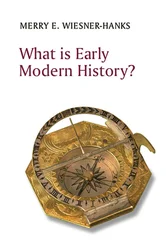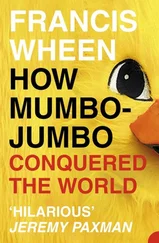R. Nisbet Bain - The Cambridge Modern History
Здесь есть возможность читать онлайн «R. Nisbet Bain - The Cambridge Modern History» — ознакомительный отрывок электронной книги совершенно бесплатно, а после прочтения отрывка купить полную версию. В некоторых случаях можно слушать аудио, скачать через торрент в формате fb2 и присутствует краткое содержание. Жанр: unrecognised, на английском языке. Описание произведения, (предисловие) а так же отзывы посетителей доступны на портале библиотеки ЛибКат.
- Название:The Cambridge Modern History
- Автор:
- Жанр:
- Год:неизвестен
- ISBN:нет данных
- Рейтинг книги:4 / 5. Голосов: 1
-
Избранное:Добавить в избранное
- Отзывы:
-
Ваша оценка:
- 80
- 1
- 2
- 3
- 4
- 5
The Cambridge Modern History: краткое содержание, описание и аннотация
Предлагаем к чтению аннотацию, описание, краткое содержание или предисловие (зависит от того, что написал сам автор книги «The Cambridge Modern History»). Если вы не нашли необходимую информацию о книге — напишите в комментариях, мы постараемся отыскать её.
The first series was planned by Lord Acton and edited by him with Stanley Leathes, Adolphus Ward and George Prothero.
The Cambridge Modern History Collection features all five original volumes:
Volume I: The Renaissance
Volume II: The Reformation, the End of the Middle Ages
Volume III The Wars of Religion
Volume IV: The 30 Years' War
Volume V: The Age of Louis XIV
The Cambridge Modern History — читать онлайн ознакомительный отрывок
Ниже представлен текст книги, разбитый по страницам. Система сохранения места последней прочитанной страницы, позволяет с удобством читать онлайн бесплатно книгу «The Cambridge Modern History», без необходимости каждый раз заново искать на чём Вы остановились. Поставьте закладку, и сможете в любой момент перейти на страницу, на которой закончили чтение.
Интервал:
Закладка:
Two series of considerations may explain why the papacy shrank from calling a fresh parliament of Western prelates and sovereigns, and why it relegated these questions of discipline to a secondary place. One was that the Holy See felt itself engaged in the necessary and therefore just enterprise of recovering its temporal independence, shattered since the migration to Avignon. That plea has been urged on behalf of Sixtus IV, and still more of Julius II. The other was that it had not long emerged from a period of revolution. In Rome the Church had been constantly regarded as a monarchy with the Pope at its head; he was the supreme judge of spiritual causes, from whom there could be no appeal. But in the fourth and fifth sessions of Constance (1415) another view had prevailed,—a view unknown to earlier ages and impossible to carry out in practice,—that of the superiority to the Pope of the Church in Council assembled. This doctrine, put forward by Cardinal d’Ailly, by Gerson, and by the followers of William Occam, might be welcome to lawyers; but it had no roots among the people; it had never flourished in the schools deemed orthodox; and it irritated as much as it alarmed the Pontiff. At Basel it led to repeated and flagrant violations of the ancient canons. During the eighteen years of its existence (1431-49) this convention had deposed one Pope, Eugenius IV, elected by lawful scrutiny; it had chosen another, Felix V, Duke of Savoy, who was hardly recognised beyond the valley of the Rhone. It had compelled bishops to sit and vote, not only with simple priests but with laymen, on questions which concerned the Catholic faith. It had submitted to the feeble Emperor Sigismund; its president was D’Allemand, the Cardinal of Avignon-an ominous title; and for ten years it sat in permanent schism. Professing to do away with abuses, it enacted them once more in the shape of commendam, annates, and pluralities. When the large-minded reformers, Cardinal Julian Cesarini and Nicholas of Cusa, forsook its tumultuous sittings; when Aeneas Sylvius, that politic man of letters, looked round for a wealthier patron and joined himself to Eugenius; and when the German prelates could no longer hold it up as a shield against the strokes of the Curia, the Council came to an end, and with it all hopes of reform on the parliamentary system. Felix V, last of the anti-Popes, laid down the keys and the tiara (April, 1449) in the house called La Grotte at Lausanne, under the roof of which Gibbon was afterwards to complete his History of The Decline and Fall. Henceforth it was evident that the spiritual restoration of Christendom would come, if ever it came, from the zeal of individuals. For the Council had failed; no Pope would risk his supreme authority by a repetition of Basel; and the rules of the Roman Chancery which Martin V had confirmed were, as a matter of course, approved by his successors.
Private effort could do much, so long as it refrained from calling dogma in question or resisting the legal claims of Pope and bishops. But the creed was not in danger. So far as we can judge from the local Councils and the literature of the years before us, in no part of Europe did men at this time cast away their inherited beliefs, with the exception of a humanist here and there, like Pomponazzo at Rome-and even these kept their denials to themselves or acquiesced in the common practices of religion. In 1466 groups of the Fraticelli were discovered and put down by Pius II at Poli near Palestrina. In the same year a German sect, of which the chiefs were Brothers Janko and Livin von Wirsberg, was denounced to Henry, Bishop of Ratisbon, by the papal Legate. The Fraticelli appeared again in 1471 on the coast of Tuscany; and notices are extant of heretics in the diocese of Reims and at Bologna. The Maranos, or crypto-Jews, in Spain deserve separate consideration. Nor did the Waldensians ever cease to exist in Italy. But obstinate unbelief was rare: even a reprobate like Sigismondo Malatesta, the monstrous tyrant of Rimini, would not die without the last Sacraments. Machiavelli, who writes as if the Christian faith were an exploded superstition, had a priest with him when he expired. Of Caterina Sforza, whose crimes and profligacies were notorious, it is on record that, while she sinned, she endowed convents and built churches. Other examples of repentant humanists are Giovanni Pontano and Antonio Galatea. Among Germans who, after quarrelling with the papal authorities or questioning articles of the creed, came back to offer their submission, may be remarked Gregor Heimburg and in the next generation Conrad Mutianus of Erfurt. It has been stated elsewhere that the famous Wessel spent his last days in the cloister of the Agnetenberg. Revolt, followed by repentance, was a common feature in the Italian genius. But indeed the rules of the Inquisition, which allowed of easy retractation, imply that few heretics would persist in their opinion after once being called to account. During the ninety years with which we are concerned no popular uprising against the authorities of the Church on purely dogmatic grounds is recorded to have taken place anywhere outside Bohemia.
Intolerance was not a characteristic feature of an age abounding in hope, dazzled with discoveries and inventions, and far from ascetic in its habits of life, its outdoor spectacles, its architecture, painting, music, and popular diversions. The later fifteenth century was eclectic rather than critical. At Rome itself, an “incredible liberty” of discussion was allowed under all the Popes of the Renaissance. And though Paul II dealt severely with Platina and the Roman Academicians, whom he accused of unbelief, his motives seem to have been personal or political rather than religious. Philosophy, too, was undergoing a serious change. Plato had supplanted Aristotle in his influence over men’s minds; and the high Doctors of the School-Aquinas, Bonaventura, and Scotus- had lost no little of their power since Occam brought into repute his logic of scepticism, which fixed between religion and metaphysics an impassable gulf where every human system disappeared in the void.
It is not, therefore, without significance that the chief reformer of the age, Cardinal Nicholas of Cusa, exhibits in his action and writings not only the pious enthusiasm which he learned from the Brethren of the Common Life, but a passion for every kind of knowledge; or that his method of apologetics sought in every form of religion its affinities with the Christian, as we learn from his Dialogue of’ Peace, or The Concord of Faith. His speculations, afterwards used or abused by Giordano Bruno in building up a system of pantheism, cannot be drawn out here. Nicholas Krebs was the son of a fisherman, born, probably in 1401, at Cues on the Mosel. He belonged to that Low-Dutch race, first cousins, so to speak, of the English, which has done such notable things for science, religion, and government, by its tenacious grasp of realities, its silent thought and moderation of speech, its energetic action that scorns the trammels of paper logic. Dwelling along the rivers of Germany and on the edge of the North Sea, this trading people had amassed riches, cultivated a Fine Art of its own which vies with the Italian, created a network of municipal liberties, and lived a deep religious life, sometimes haunted by visions, which might be open to the suspicion of unsoundness when the formal Inquisitor from Cologne looked into it with his spying-glass.
Yet no one has ventured to brand with that suspicion Thomas ä Kempis. From this Low-Dutch people we have received the Imitation of Christ; when a Catholic Reformation is spoken of, that little volume, all gold and light, will furnish its leaders with a standard not only of spiritual illumination but of piety towards the Sacrament of the Altar which took for granted the whole Catholic system. Since it was finally given to the world in 1441 it has been the recognised guide of every generation in the Western Church. But with its author we must associate Cusanus and Erasmus, both of the same stock; these three fill the spaces of transition between the decadent luxury of Avignon and the stern reaction which followed hard upon Trent. By their side appears Cardinal Ximenes, who attempted among Spaniards the same work of renovation that Cusanus set on foot among Germans and Netherlander s. To the Imitation corresponds, almost as an art to its theory, the Spiritual Exercises of St Ignatius Loyola. And if Erasmus left no successor equal to himself, he trained a host of disciples or plagiarists in the Company of Jesus, where his memory has always evoked a fierce antagonism, and his writings have been put to the ban.
Читать дальшеИнтервал:
Закладка:
Похожие книги на «The Cambridge Modern History»
Представляем Вашему вниманию похожие книги на «The Cambridge Modern History» списком для выбора. Мы отобрали схожую по названию и смыслу литературу в надежде предоставить читателям больше вариантов отыскать новые, интересные, ещё непрочитанные произведения.
Обсуждение, отзывы о книге «The Cambridge Modern History» и просто собственные мнения читателей. Оставьте ваши комментарии, напишите, что Вы думаете о произведении, его смысле или главных героях. Укажите что конкретно понравилось, а что нет, и почему Вы так считаете.












